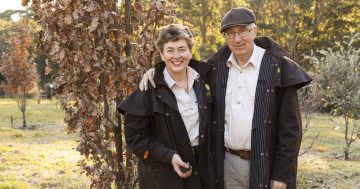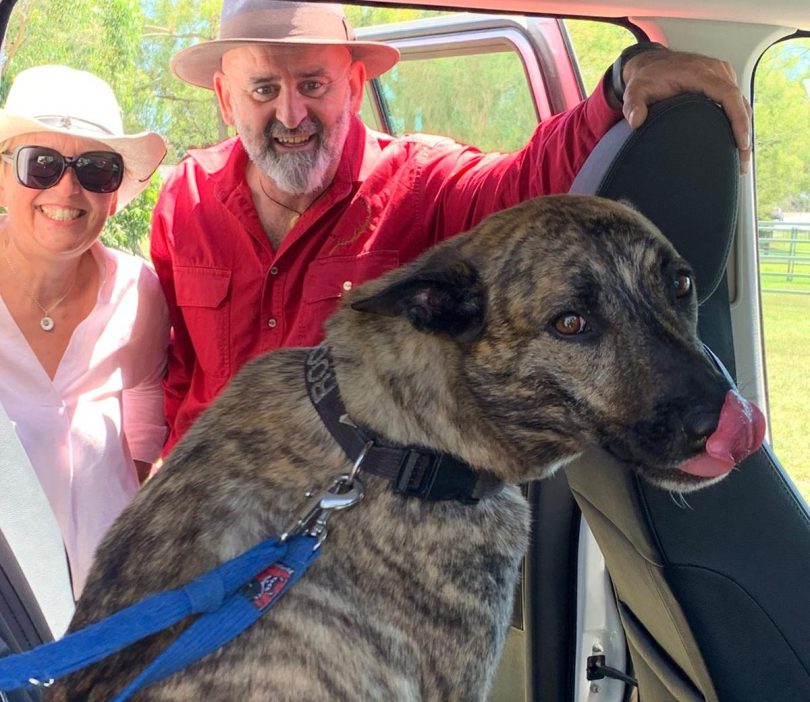
Truffle grower Olivier Kapetanakos with his partner Jacquie and dog Rocko. Photos: Supplied.
Australia is predicted to become the second-largest global producer of truffles within 10 years, and growers located in NSW’s cooler climates are establishing truffières (truffle orchards) in preparation.
Olivier Kapetanakos and his partner planted 400 trees, mostly French oaks and some hazelnuts, on two hectares on their farm stay, Avonside Alpine Estate, near Jindabyne in the Snowy Mountains, in 2020.
They hope to harvest their first truffles in winter 2024, and see potential in selling their Snowy Mountains Truffles to domestic restaurants and establishing a truffle hunt for tourists.
One kilogram of black truffles – the most commonly grown truffle in Australia – can fetch as much as $2000, according to the Australian Truffle Growers Association.
While the Jindabyne couple has a while to wait, Olivier has found a truffière near Jindabyne, on Alpine Way, that he can harvest and sell high-altitude, black truffles from.
This has given him time to practice harvesting truffles – relying on books, online resources, and trial and error, with few people in the area to learn from – and establish a market.
Over at Dignams Creek, near Cobargo in the Bega Valley, Fiona Kotvojs and her husband have been harvesting black truffles for about three years.
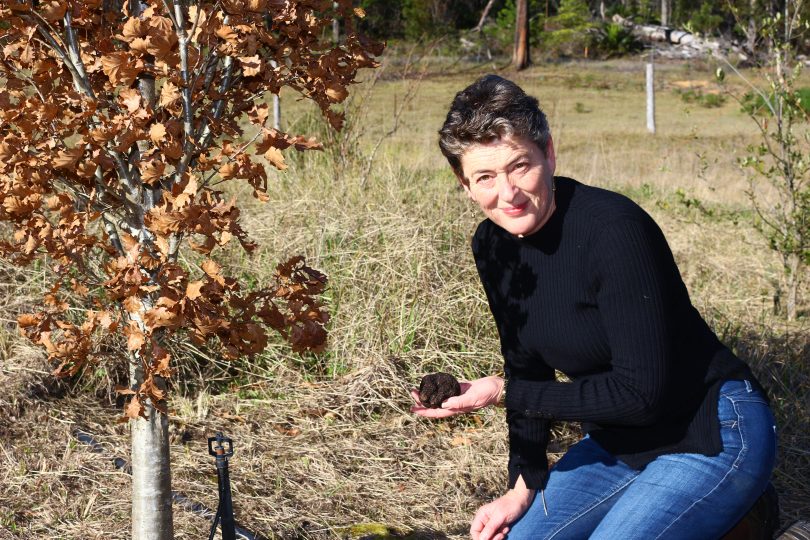
Fiona Kotvojs on her family’s farm at Dignams Creek during last season’s truffle harvest.
They decided to plant one hectare of 50 per cent English and holly oak trees and 50 per cent hazelnut trees in 2011-2012 to diversify Fiona’s parents’ 380-acre (about 153 hectares) farm.
“I grew up on this farm, and farms of this size were financially viable when they were established, through to the 1960s, but since then most farms down here have struggled to be viable,” says Fiona.
Like Olivier, Fiona also hopes to run truffle hunts from this coming winter, inviting tourists to learn about truffles, take part in the harvest and try truffles at nearby restaurants.
Interestingly, a truffle is a mushroom that grows underground on the roots of inoculated oak and hazelnut trees. Growers will debate which tree is best, however Fiona says her oak trees produce more truffles and are easier to manage, with hazelnuts requiring more pruning and being harder to harvest truffles from.
A good truffle also comes down to a good dog, which is responsible for sniffing out the truffles during harvest.
Olivier is currently training a Dutch Shepherd, which he hopes will be ready by this winter, while Fiona, who doesn’t own a dog, hires people who do have already trained canines.
The initial cost of establishing a truffière is high – with trees, fencing and irrigation all needed – and Olivier and Fiona admit truffles are a long-term gain.
Fiona spent about $30,000 establishing the truffière and hopes to recover costs by the end of the 2021 harvest, almost 10 years since planting the trees.
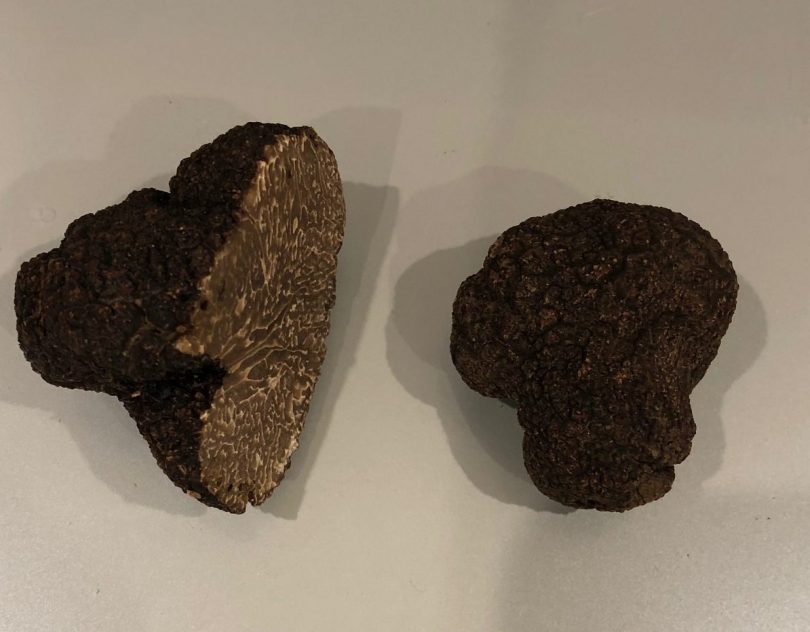
Truffles harvested by Olivier Kapetanakos in the Snowy Mountains.
However, as one of the first people in the area to establish a truffière, Fiona admits it’s been a process of trial and error, and there are things she now realises could have saved money.
Olivier hopes to make a return on investment by year six or seven, and his confidence has grown from selling the truffles grown on Alpine Way.
“Last year, we sold the whole harvest and could have sold more,” he says.
He and Fiona have been selling truffles to local restaurants and tourists, and haven’t experienced any problems during COVID-19.
Fiona has also found a market in the US, where chefs have been impressed by the quality of Australian truffles.
“American chefs says they are the most consistent in quality they’ve had,” she says. “We also offer a unique flavour because truffles are a bit like wine – their flavour depends on where they’re grown.”
Australia is also uniquely positioned in that it can harvest truffles during the European and American off-season.
Olivier believes sales will also grow as more people become aware of the high-altitude truffles produced in the Snowy Mountains.
“We believe, and it’s been reinforced by chefs, that a high-altitude truffle is slightly smaller and denser, and produces a stronger odour and flavour,” he says.
Alpine Road is nearly 1000m above sea level, while Olivier predicts Avonside Alpine Estate could be the highest truffière at 1200m.
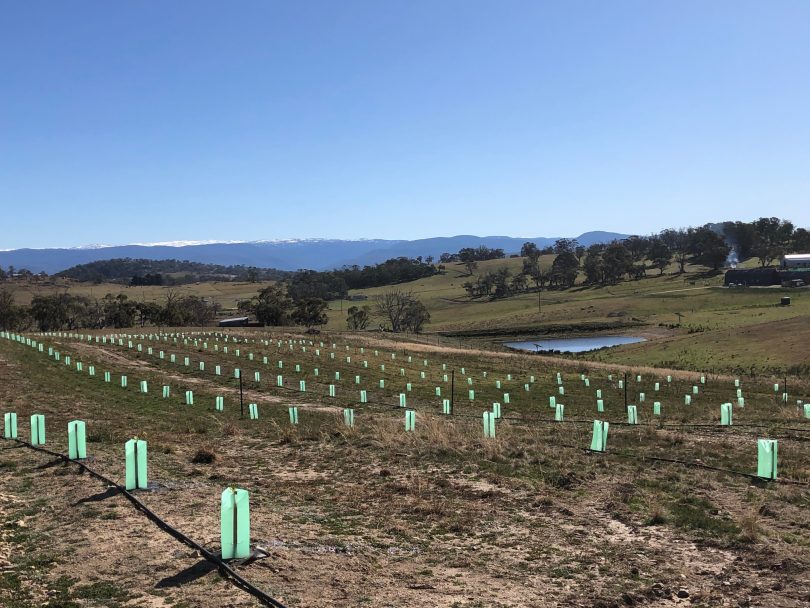
French oak and hazelnut trees planted by Olivier Kapetanakos at his farm stay.
Tourism is key for the pair, and both hope their truffle hunts will bring people into the region during the off-season.
As part of this, Olivier and Fiona hope to encourage more locals to grow truffles.
“I’m keen to increase local employment opportunities in rural areas and see truffles as a potential for farms that are too small to be viable with sheep and cattle,” says Fiona.
“Plus, the American market I’ve found will take as much as we can produce.”



